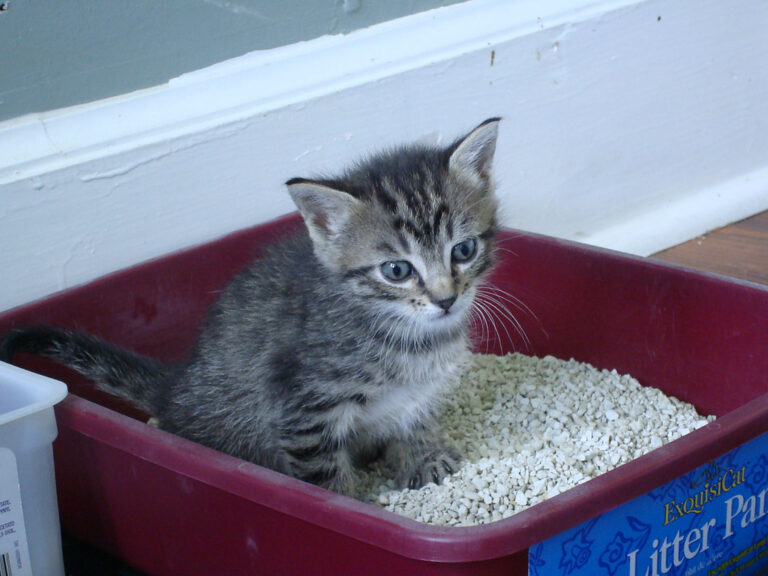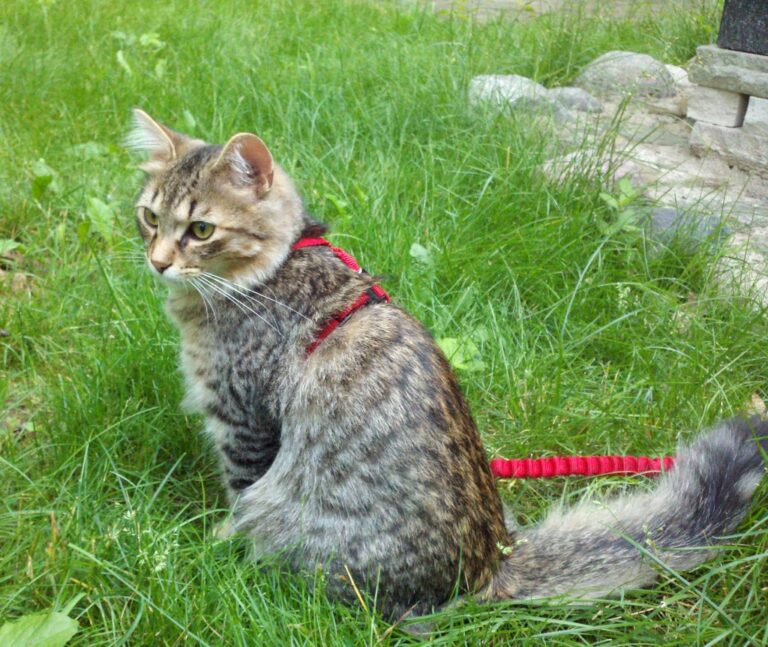Preventing and Solving Litter Box Problems for Cats

Ah, cats! These mysterious creatures have a way of capturing our hearts and filling our lives with joy. But what happens when our furry friends start having issues with their litter boxes? Well, that’s where we come in! In this article, we’ll delve into the realm of litter box dilemmas and provide you with expert tips on how to prevent litter box problems for cats, keeping both you and your feline companion happy.
Do you often find yourself pondering questions like “Why is my cat avoiding the litter box?” or “How can I keep my kitty from leaving surprises all over the house?” Fear not, for we’ve got you covered!

How to Train a Cat to Use the Litter Box
Cat owners know that proper litter box training is essential for maintaining a clean and harmonious home. While cats are naturally inclined to use a litter box, some may require a little extra guidance. In this article, we will guide you through the process of training your cat to use the litter box effectively. So…
Choosing the Perfect Spot for Your Cat’s Litter Box
Finding the right location for your cat’s litter box is crucial to ensure their comfort and encourage consistent use. Creating a pleasant and accessible environment will greatly reduce the chances of encountering litter box problems. Here’s what you need to know:
- Privacy is Key: Place the litter box in a peaceful and semi-private area of your home, away from heavy traffic. Cats prefer a quiet spot where they can have some personal space without feeling disturbed or anxious.
- Separate Spaces for Kittens: If you have a new kitten, it’s best to keep them in a small room for a few days with their litter box. This helps them become familiar with the designated area and encourages consistent use. Gradually increase their living space as they show consistent litter box habits.
- Avoiding Startling Noises: Cats are easily frightened by sudden loud noises, such as those made by household appliances. Therefore, it’s important to keep the litter box away from areas with powerful noise sources like washing machines or dishwashers. Providing a serene environment will encourage your feline friend to feel more at ease.
- Avoid Tight Spaces: Just like humans, cats enjoy their personal space. Avoid placing the litter box in cramped areas such as closets or corners where your cat may feel trapped or uncomfortable.
Choosing the Right Litter: A Cat’s Delight
Selecting the right litter for your cat is vital to their overall litter box experience. Finding a litter that suits their preferences will ensure their comfort and consistency. Consider the following tips when choosing the litter:
- Unscented Clumping Litter: Cats have a heightened sense of smell and may find scented litter unpleasant. Opt for plain, unscented clumping litter, as it is preferred by the majority of cats. Once you find a litter that works well for your feline companion, avoid switching brands, as sudden changes can lead to litter box aversion.
Maintaining a Clean and Inviting Litter Box
Regular maintenance of the litter box is crucial to providing a pleasant experience for your cat. By keeping it clean and hygienic, you will discourage your feline friend from seeking alternative spots. Follow these best practices:
- Daily Scooping: Remove solid waste and clumps from the litter box daily. This helps maintain cleanliness, prevents odor buildup, and ensures your cat always has a fresh place to do their business.
- Monthly Cleaning: In addition to daily scooping, it’s important to empty the entire litter box and wash it with warm water at least once a month. Just like us, cats prefer a clean and hygienic environment. A monthly thorough cleaning will keep your feline friend happy and content.
Making the Litter Box Comfortable and Accessible
Providing a comfortable and accessible litter box is essential for cats of all ages. Take note of the following considerations:
- Kitten-Sized Box: For kittens, start with a smaller litter box that they can easily access. As they grow, gradually transition to a litter box with deeper sides, accommodating their increasing size and mobility.
- Senior Cat-Friendly Boxes: Older cats, or cats with mobility issues, may struggle with high-sided litter boxes. Choosing boxes with lower sides will allow them to easily hop in and out without any discomfort or difficulty.
- Uncovered Boxes: Many cats prefer uncovered litter boxes as they provide a sense of openness and convenience. Although covered litter boxes might seem appealing to humans, cats can find them confining and may be reluctant to use them. Opting for an uncovered box will likely yield better results.
- One Plus One Rule: It’s essential to provide enough options for your furry friends. In a household with multiple cats, ensure there is at least one litter box per cat, plus an additional box. This gives them a variety of choices and reduces any potential tension regarding shared usage.
Supporting Your Cat in Times of Stress
Cats are susceptible to stress, and significant changes can often lead to litter box problems. Whether it’s a big change like moving to a new home or the addition of a new pet, or even a smaller change like rearranging furniture or using new household cleaners, it’s essential to provide your cat with extra attention and care during these times. Here’s what you can do to support your feline companion:
- Quality Time: Spending extra time with your cat, engaging in play and offering affection, can help alleviate their stress and anxiety. They rely on your support and reassurance during these challenging periods.
- Stable Environment: Stability and routine are crucial for cats. Minimize environmental changes as much as possible, and provide a consistent and predictable daily structure to help your cat feel secure and at ease.
With these invaluable tips, you can create a litter box environment that ensures comfort, consistency, and happiness for your beloved feline friend. Remember, understanding and addressing their needs is essential to preventing and solving litter box problems effectively. Say goodbye to headaches associated with litter box issues by implementing these expert-backed recommendations.
Frequently Asked Questions
Let’s address some frequently asked questions pertaining to litter box problems for cats:
Why does my cat scratch the walls outside the litter box?
Cats sometimes engage in this behavior due to territorial marking or a desire for more space. Consider the following solutions:
- Provide a larger litter box: Cater to your cat’s need for space by opting for a larger litter box or one with higher sides.
- Horizontal scratching alternatives: Place a scratching post near the litter box to redirect their energy and offer an appropriate outlet for their scratching instincts.
How many litter boxes should I have for multiple cats?
As mentioned earlier, multiple cats call for multiple litter boxes. A general rule of thumb is to have one more litter box than the number of cats. This helps reduce territorial disputes and ensures each feline friend has their own designated spot.
How can I transition my cat to a new litter type?
To transition your cat to a new litter type, follow these simple steps:
- Gradual introduction: Start by mixing a small amount of the new litter with the old one. Gradually increase the ratio over time until your cat fully adjusts.
- Observe behavior: Pay attention to any changes in your cat’s behavior, like avoiding the litter box, as this might indicate that they are unhappy with the new litter. If needed, reassess the choice and try a different type.

